How Long Is a Football Match? A Complete Guide to Match Duration
Football is more than just a game; it’s a powerful experience filled with moments that captivate millions around the globe. Whether you’re a seasoned football fan or new to the sport, understanding the length of a match is key to fully appreciating its intensity. Have you ever wondered how long a football match actually lasts? The simple answer is 90 minutes, but there’s much more to it. From stoppage time to extra time and penalty shootouts, knowing the full breakdown of a football match’s duration will help you engage more deeply with the game.
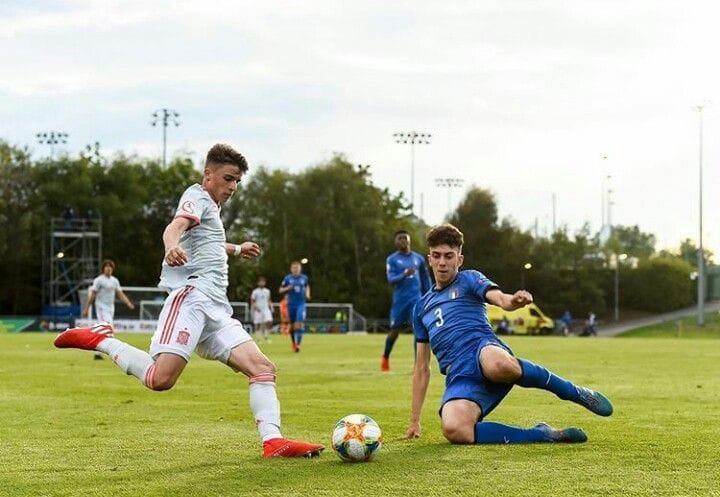
In this guide, we’ll explain everything you need to know about the duration of a football match, including what affects it, how stoppage time works, and why extra time and penalties sometimes come into play. By the end, you’ll be able to understand the flow of the game, making you a more informed viewer.
The Standard Duration of a Football Match
When you watch a football match, you’re likely familiar with the basic structure: two halves, with a break in between. A standard football match lasts for 90 minutes, divided into two 45-minute halves. The players take a 15-minute break at halftime, where coaches provide strategies and players recover for the second half.
Why 45-Minute Halves?
The decision to divide a football match into two 45-minute periods dates back to the origins of the game in the late 19th century. While some variations of early football had shorter halves, the 45-minute structure became the standard because it balances fairness and competitive integrity. Each team gets an equal amount of time to showcase their skills, and the break at halftime allows for tactical adjustments and player rest.
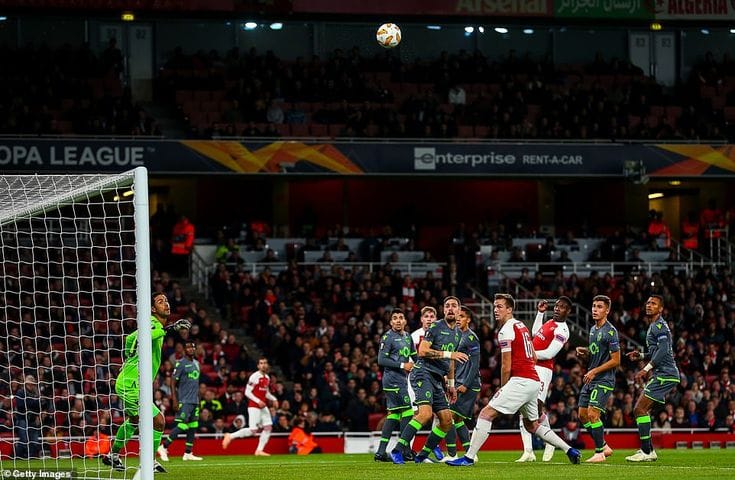
- Key Insight: Understanding this structure enhances your appreciation for the stamina required by players and the strategies coaches employ during those critical 45 minutes.
Halftime Break
The 15-minute halftime break is essential for both teams to regroup and strategize. During this time, players receive instructions from their coaches and rehydrate before returning to the field. It’s also a time when fans can reflect on the first half, discussing what’s working, what isn’t, and what might happen next.
- Fun Fact: In some leagues, the halftime period might feel a bit longer if there are special performances or entertainment scheduled, but the play itself is suspended for 15 minutes.
Stoppage Time: Adding Extra Minutes to the Clock
You may have noticed that, often, the referee adds a few extra minutes to the clock after the first or second half. This is called stoppage time, and it’s added to make up for time lost during the match due to various disruptions.
How Is Stoppage Time Calculated?
The official rule for stoppage time is that it accounts for any time lost during the match. For example:
Injuries: If a player is injured and requires medical attention, the clock is paused, and that time will be added back at the end of the half.

Substitutions: Every substitution takes up a small amount of time, so this is factored into the stoppage time.
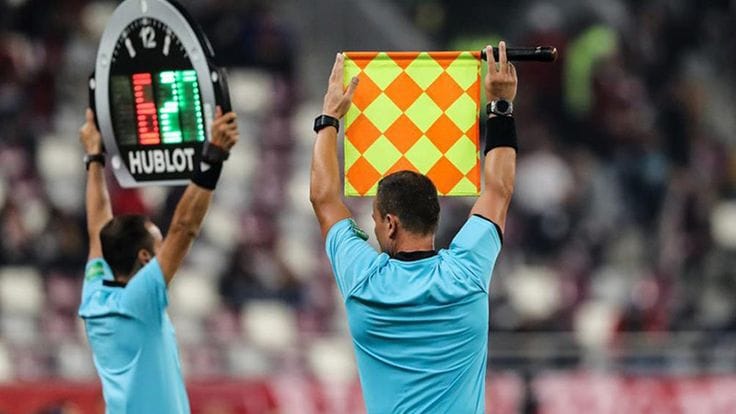
Other Delays: Time may be added for things like goal celebrations, time-wasting tactics, or any other interruptions that delay the flow of the game.
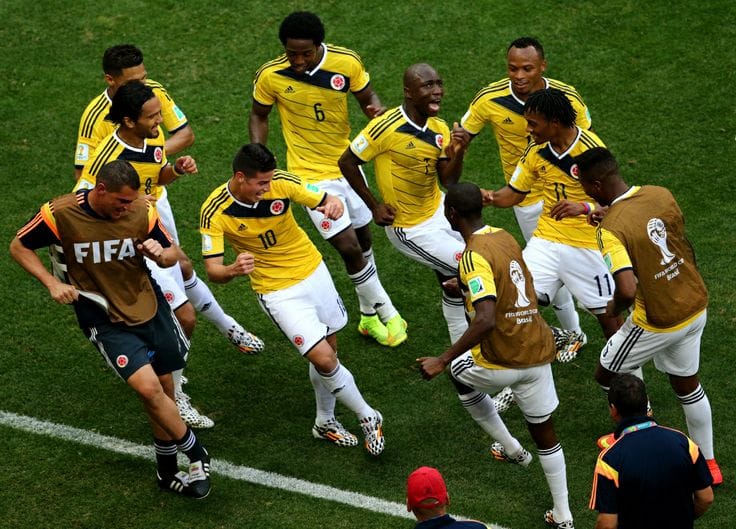
Stoppage time can vary, but it’s usually between 1 and 5 minutes per half. Referees have the discretion to decide how much time to add based on the disruptions they observe. This is why, in some high-intensity matches, the amount of stoppage time can feel substantial, especially in the final moments of the game.
The Role of the Referee
The referee is the sole authority in determining how much stoppage time is added. They track the time lost and decide how many minutes should be tacked on to the original 45 minutes.
- Tip: As a fan, paying attention to the referee’s signals and understanding the flow of stoppage time can make the game more thrilling—especially when a goal is scored during the dying seconds of a match.
Extra Time: What Happens When the Match Is Tied?
In knockout-stage tournaments like the World Cup, UEFA Champions League, or Copa América, extra time is used when the score is tied at the end of the regular 90 minutes. Extra time is meant to give both teams an opportunity to break the deadlock without resorting immediately to a penalty shootout.
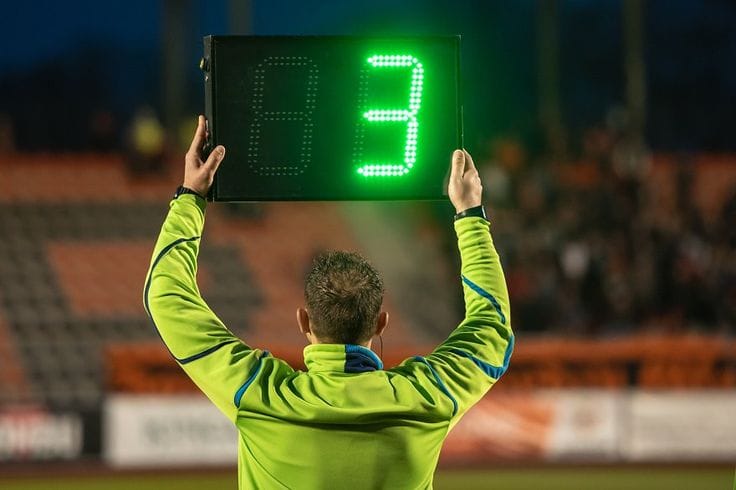
The Structure of Extra Time
Extra time consists of two 15-minute halves, for a total of 30 additional minutes. Unlike the regular 90 minutes, there is no halftime break between the two extra time periods, though players can take a short water break. This rule ensures that extra time remains fast-paced, as players are often exhausted by this point in the match.
Extra time is often a pivotal moment in a football match. Players are already fatigued from the regular 90 minutes, and the pressure to score can lead to dramatic, high-energy moments. It’s during extra time that the most memorable game-changers often occur.
- Fun Fact: Some famous moments in football history—like Zinedine Zidane’s header in the 1998 World Cup final—occurred during extra time.
When Is Extra Time Used?
Extra time is typically reserved for knockout rounds of tournaments. It is not used in league matches or group stages, as the objective is simply to decide a winner from a single match. If no winner is determined during extra time, a penalty shootout will occur.
Penalty Shootouts: The Final Decider
If a match remains tied after 90 minutes and extra time, the game goes into a penalty shootout. A penalty shootout is an intense and nerve-wracking procedure designed to determine the winner through a series of one-on-one kick attempts.
The Penalty Shootout Format
- Five Penalties per Team: Each team gets 5 attempts to score, alternating between the two teams. If one team scores and the other misses, the game is decided immediately.
- Sudden Death: If the score is still tied after 5 penalties per team, the shootout moves into sudden death, where teams alternate kicks until one team scores and the other does not.
Penalty shootouts typically last between 5 and 10 minutes, depending on how quickly each team takes their kicks. This dramatic finale is often the most nerve-wracking part of a football match, as the pressure on the players is immense.
Why Are Penalty Shootouts Used?
Penalty shootouts are used to ensure that a match has a definitive winner, especially in tournaments with knockout rounds. This eliminates the possibility of a draw deciding the outcome and brings an exciting conclusion to the game.
Factors Affecting the Duration of a Football Match
While the standard duration of a football match is 90 minutes, there are several factors that can influence how long the game lasts. It’s important to be aware of these variables, as they can make a match feel longer or shorter depending on the circumstances.
Weather Interruptions
Heavy rain, lightning, or extreme weather can cause delays in a football match. In such cases, the referee may stop the game until conditions improve. These interruptions can result in significant stoppage time or, in rare cases, the suspension of the match.
Player Injuries
When a player is seriously injured and requires medical attention, the match is paused, and the time lost is added back as stoppage time. Some injuries, such as head injuries or severe muscle strains, may take longer to treat, extending the overall match duration.
Time-Wasting Tactics
While time-wasting is not a formal rule of football, it does occur. Goalkeepers might delay restarts, players may take too long for throw-ins or goal kicks, and substitutions can be made slowly to drag out the match. The referee accounts for this type of delay when deciding on stoppage time.
Why Does Match Duration Matter?
Understanding the time structure of a football match enhances your enjoyment as a viewer. Whether you’re preparing to watch a major tournament match or attending a live game, knowing how long a match lasts—and why time can be added or extended—keeps you engaged with the action.
For Fans
As a fan, knowing when to expect extra time or penalties can help you prepare for dramatic moments. You can anticipate the intensity of stoppage time or settle in for a heart-stopping penalty shootout.
For Coaches and Players
Coaches use knowledge of match duration to plan their strategies, manage substitutions, and make tactical decisions. Players, on the other hand, must maintain focus throughout the game, managing their energy and stamina to perform well in the final minutes, especially during extra time.
A Better Understanding of Football’s Timing
The duration of a football match is not just about the clock ticking down—it’s about understanding the structure of the game, how time is managed, and how each phase contributes to the overall experience. From the regular 90 minutes to stoppage time, extra time, and penalty shootouts, each segment of the game carries its own excitement and tension.
By knowing the timing behind the scenes, you’ll be able to appreciate the strategies, the moments of brilliance, and the nail-biting finales that make football so thrilling. So, next time you watch a match, you’ll not only know how long it lasts—you’ll understand every minute of it.
Now that you’ve mastered the basics of match duration, why not dive into the game and experience the thrill of every second? Keep watching, keep learning, and, most importantly, keep enjoying football!